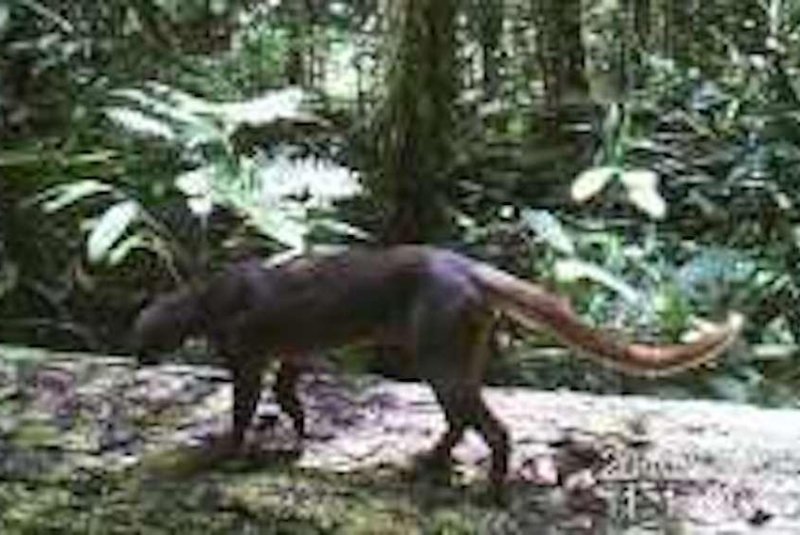The male bay cat was filmed by a camera trap in a portion of the Bornean forest where the elusive species was not thought to live. Photo by the Borneo Nature Foundation
April 28 (UPI) -- Scientists have discovered a new population of bay cats, an elusive cat species endemic to Borneo.
A male bay cat was spotted by one of 52 camera traps set up in Rungan Landscape in Central Kalimantan, a region of remote forest in Indonesian Borneo where bay cats were not thought to live.
"The type of tropical forest where we carried out our research is generally considered to be of relatively poor conservation value," Frank Van Veen, a professor of ecology and conservation at the University of Exeter, said in a news release. "However, we have found that this landscape actually represents a mosaic of forest types that supports a high diversity of wildlife, including a number of endangered species."
The bay cat, also called the Bornean cat or Bornean marbled cat, is endangered. There are estimated to be less than 2,500 of the cats left in the wild.
Van Veen plans to spearhead efforts to protect large swaths of the forest where the bay cat was filmed.
"The discovery of the bay cat here illustrates that we cannot just make assumptions about the conservation value of remaining areas of rainforest, and that research on the ground is essential for the well-informed conservation," he said.
Van Veen and his colleagues at the Borneo Nature Foundation and Muhammadiyah University in Palangka Raya, Indonesia, didn't set out to find bay cats. Researchers simply wanted to know what was living in the forest region.
"Wild cats can be some of the most difficult species to study in the wild," said Susan Cheyne, co-director of Borneo Nature Foundation. "They are secretive, solitary and highly camouflaged. But, our knowledge and understanding of the secretive wild cats of Borneo is improving thanks to technology like camera traps."
Researchers plan on continuing the survey of the forest with hopes of new discoveries. For ecologists and conservationists in Borneo, where natural resources are under threat of development, the stakes are always high as they race to catalogue the island's rich biodiversity.
"There is still a lot we don't know about the forests of Borneo and the clock is ticking," the research team said. "More surveys are needed to understand the distribution and ecological needs of Borneo's wildlife if we are to save species on the brink of extinction."















